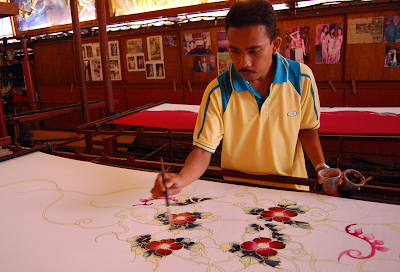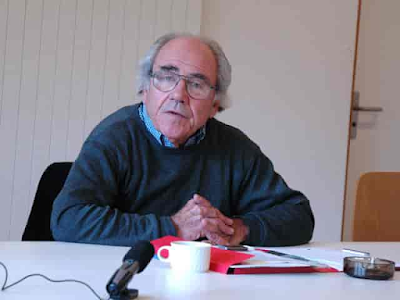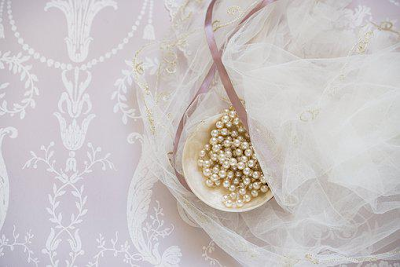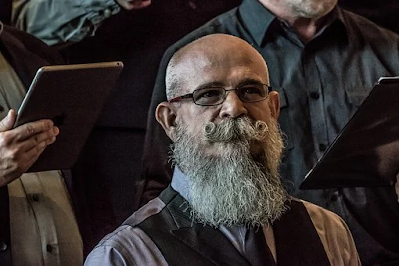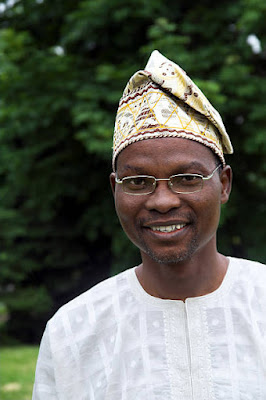Featured
- Get link
- X
- Other Apps
Batik
One variation of the resist dyeing technique is batik, in which the surface pattern on the fabric is applied using a semifluid material (in the case of batik, wax) that resists dye.
The "negative space" or theme left behind when the material is removed contrasts with the dye.
Repetitive resist and dye applications result in a complicated design.
In the past, resist dyeing was practiced on every continent with the exception of the Pacific Islands and Australia.
Mud, pastes (made of rice, peanuts, cassava, or beans), starch, heated resin, paraffin, and beeswax are examples of resist materials.
In West Africa, Turkistan, the Middle East, mainland Southeast Asia, and south China, geometric designs are popular, as are monochromatic palettes of white (cloth color) and dark brown, as in the bogolan mud textiles of Mali, or white and indigo, as in the Blue Hmong batiks.
Batik evolved intricate styles unique to Indonesia, especially on Java, and the complexity of these designs is reflected in the usage of batik fabrics in Indonesian clothing.
Method Of Use In Batik.
The availability of imported high thread count cotton fabric from Europe following the industrial revolution was crucial to the development of excellent batik in Indonesia.
By sliding molten hot wax from a copper stylus known as a canting, which barely touches the cloth (coarse material would produce snags and wax drips), women make resist designs on this fabric.
The material is waxed on both the top and bottom, ensuring that the design is complete on both sides.
The material is coloured and then boiled to remove the wax after each waxing.
The procedure is then repeated while another component of the design is waxed.
The process of making tulis batik, which translates as "writing," involves using a stylus to create a hand-drawn batik design.
Waxing may take up to two weeks, and the final dye bath can take up to a month to finish.
Avoiding wax cracking is important since it shows shoddy workmanship.
A type of copper stamp called a cap (pronounced chop) was designed by Chinese batik artisans on the north coast of Java toward the middle or end of the nineteenth century.
It consisted of a configuration of needles and metal strips that was pressed into a hot wax stamp pad and used to transfer the wax to the fabric.
In order to wax both the top and bottom of the fabric, caps were linked together as mirror images.
A trained worker can wax twenty pieces of clothing in a day while using cap batik, which is more quicker than tulis.
Design Themes For Batik.
Traditional batik patterns from central Java may be divided into four types, with the fourth being more organic than the other three.
1. The first is the garis miring, which has diagonal patterns like parang rusak (literally, "broken knife").
2. The second pattern is called nitik, which uses tiny dots or scallops as filler in larger motifs to mimic the visual impression of woven fabric.
3. The third is ceplok, which features grid-like patterns with rosettes and fruit cross-sections as its sources of inspiration.
4. The fourth group of stylized flora and fauna themes is called semem.
Batik patterns from the north coast are often more organic and include themes of animals, birds, insects, and flowers.
Additionally, these batiks are more vivid.
Traditional batiks from central Java often include geometric patterns in subtle shades of indigo, brown, cream, and white.
Some, like the parang rusak, were exclusively permitted in the royal courts of Yogyakarta, Surakarta, and other central Java, but these sumptuary regulations have since been abandoned.
Placement of the motif and attire.
An analysis of several items, including a head cloth (iket kepala), shawl (slendang), two types of wrapped skirts (kain panjang and sarong), and drawstring trousers, demonstrates how strategically placing many patterns is done in batik on clothing (celana).
The head wrapper, worn by males, is a batik garment made in Java and used all across Indonesia.
It is roughly three feet long.
The inner region is shaped like a diamond and may either be solid or batiked.
The fabric's outside is embellished with a variety of designs and an elaborate border with faux-fringe lines.
One head cloth may have a great degree of ornamental variation by including various motifs into each of its four quadrants.
The slendang, or shoulder cloth, may feature borders and faux fringe much like the head cloth.
There are several sizes; one suitable for transporting youngsters is around 18 inches by 7.5 feet.
Some may have a single batik design throughout, while others may have tumpal (triangle) and other border motifs particularly decorated on either end.
A skirt wrapper called a kain panjang, which is around 250 centimeters long, might have thin bands at the top and bottom or an all-over pattern.
A clever and effective use of space is when kain panjangs are batiked with two opposing designs, known as pagi-sore (morning-afternoon).
This enables a single piece of fabric to effectively function as two outfits.
Two triangles are used in the design of the fabric so that only one triangle will be seen when the cloth is wrapped around the body.
Up to 220 centimeters in length, the sarong is tube-shaped and shorter than the kain panjang.
The kain panjang was associated with Java's center and its palaces, but the sarong was native to Java's north shore and subsequently spread across Indonesia as a kind of casual attire.
At the start of the 20th century, Eurasian women entrepreneurs created colorful, tripartite-patterned Pekalongan-style batiks after a town on Java's northern coast.
The top and bottom of the material were bordered with floral borders (pinggir), with the lower border often being broader.
A long panel (kepala) with a contrasting background and motif from the rest of the cloth was present at one end (badan).
The kepala was framed on each side by the bottom floral border.
The flower arrangement in the kepala would have been hand-drawn, as opposed to the badan and pinggir, which were often produced using a cap (tulis).
The kepala worn in front would be best seen when stitched into a sarong.
It was no surprise that Pekalongan sarongs resembled Dutch floral and other motifs.
Dutch men wed Chinese and Javanese women wearing kain-kebaya during the early years of Dutch colonialism of Java (blouse-jacket with kain panjang or sarong).
The ladies, who were Dutch citizens, and the kids wore kain-kebayas to social gatherings to display their valued Pekalongan batiks.
In order to better exhibit the kepala and badan of the batik wraps, the rather lengthy kebaya eventually shrunk to hip length.
Early in the 20th century, many Dutch women moved to Java to live with their spouses or marry Dutch men.
They also began wearing the kain-kebaya as a practical substitute for the fitted European clothing.
However, as European racial sentiments in the colonies hardened in the 1920s, European women increasingly chose to dress in tropical European fashion in public settings in an effort to set themselves apart from Eurasian women.
Celana, a kind of batik drawstring pant, was linked to the dynamics of the ruler and the ruled.
Although its exact history is unknown, batik pants seem to have been inspired by the clothing worn by young Chinese boys.
Batik trousers were in use in the 1870s, if not before.
Chinese and Dutch men thought the pants to be both exotic and comfortable.
While their ladies unwinded in kain-kebaya, Dutch men preferred them as loungewear at home.
According to photographic evidence, batik trousers were worn at least as far south as Sumatra by adult men and kids.
The batik trousers were either created from a batik fabric or from plain cotton and then batiked.
The "cuff" of the batik trousers was created by combining batiks with border bands.
An extension band made of white cloth was sewed to the top of the batik pants for taller people; the band would be concealed by a shirt or jacket.
Batik and global attire.
The rivalry from less expensive screen-printed imitation batik in the 1970s gave rise to two innovations: the batik shirt and tulis batik as couture.
In an effort to revive the batik sector, the governor of Jakarta, Ali Sadikin, suggested that a collared, long-sleeved button-down shirt made of batik would be a suitable formal substitute for the three-piece suit.
The batik shirt evolved become the standard attire for metropolitan Indonesian men.
In the second innovation, tulis couture lines were established by batik designer Iwan Tirta by printing the fabrics on silk (rather than cotton) and reinterpreting traditional designs with the addition of gold.
If Tirta had started with a flat batik fabric that had an overall design and border, the border may have been seen at the hem or sleeve; nevertheless, Tirta made use of the whole fabric.
Both Sadikin and Tirta contributed to the development of new clothing trends for Indonesians as well as the international recognition of Indonesian batik.
Find Jai on Twitter | LinkedIn | Instagram
See also:
Dyeing, Resist.
References And Further Reading:
Djumena, Nian S. Batik dan Mitra, Batik and its Kind. Jakarta: Djambatan, 1990.
Elliot, Inger McCabe. Batik: Fabled Cloth of Java. New York: Clarkson N. Potter, Inc., 1984.
Larsen, Jack Lenor. The Dyer’s Art: Ikat, Batik, Plangi. New York: Van Nostrand Reinhold Company, 1976.
Schulte Nordholt, Henk. ed. Outward Appearances: Dressing State and Society in Indonesia. Leiden, The Netherlands: KITLV Press, 1997.
- Get link
- X
- Other Apps

